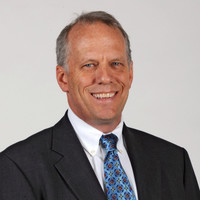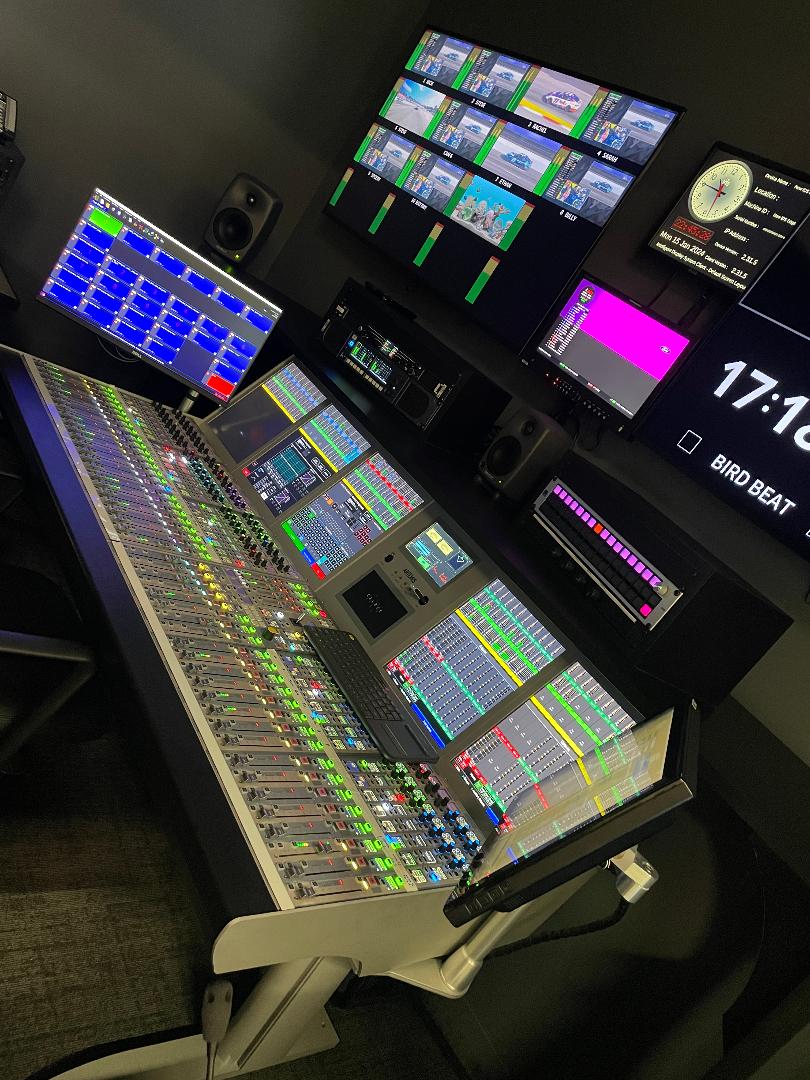New NASCAR Production Facility Puts Race Audio in the Lead
Tech readies NASCAR for future of streaming and remote production
Story Highlights
NASCAR is ready to roll. Just ahead of the 2024 season kickoffs — the Rolex 24 at Daytona on Jan. 27, the iconic Daytona 500 on Feb. 15 — the motorsports master is inaugurating operations at its new Concord, NC, facility, which will be home to NASCAR Productions, NASCAR Studios, and the Motor Racing Network.
Prosaically named the NASCAR Production Center — and unofficially dubbed “The Ranch” since it was converted from a multistory building to a single-floor design — the new plant brings more of NASCAR’s personnel under one roof. That includes its audio team, significantly increasing its remote-mixing capability.
The 58,000-sq.-ft. facility, adjacent to the NASCAR R&D Center, houses more than 140 employees in eight control rooms, four audio-control rooms, four announcer booths, eight editing suites, podcast studios, and two audio-sweetening rooms. It even has doors to the parking lot to allow drivers to pull their stock cars into the building for studio shots.
Comms, Audio Capabilities Are Enhanced

NASCAR’s Mike Zylak: “The [broadcast] partners aren’t asking for [Dolby Atmos] right now, but there’s no reason we couldn’t [deploy it] in the future.”
The facility’s audio-equipment list is built around a tectonic shift in an IP infrastructure: four Calrec Artemis audio consoles for live production, two Calrec Artemis audio decks for international-production rooms, up to four Calrec Impulse Cores, two Calrec Type R consoles for radio production, RTS Adam and Omnio frames, and Genelec audio monitoring throughout the facility. In total, an estimated 3,000-plus channels of digital audio come into and through the new plant, including 32 channels of intercom.
NASCAR will continue with 5.1-surround production but has no immediate provisions for Dolby Atmos. “The [broadcast] partners aren’t asking for that right now,” says Zylak, “but there’s no reason we couldn’t [deploy it] in the future. The capabilities for it are there.”
Ready for a Multi-Partner Future
The new facility’s timing was propitious, according to NASCAR VP, Operations and Technical Production, Steve Stum: it opens a year ahead of the 2025 start of a mega deal that will bring NASCAR races to a combination of NBC Sports, Fox Sports, Amazon, The CW, and Discovery, as well ahead of the aging-out of the previous facility, which dates to 2009.

NASCAR’s Steve Stum: “[With ST 2110, the audio team is] excited about the opportunities that they have to make audio a lot better than it has been in the past.”
“We decided a couple of years ago,” Stum continues, “to build a purpose-built facility that would make it easier on us to be ready for these new partnerships. The goal of this project was really for us to be able to put the infrastructure in place to build to what the networks are looking for in 2025. Because of the ST 2110 infrastructure and not having router limitations, we’ll be able to take requests to build into it what our partners are looking for in their [future] productions.”
The facility was designed in collaboration with NEP, which also provides NASCAR’s trucks, Alpha and SRT3, and has moved aggressively into the ST 2110 environment in recent years.
“NEP has been great partner, and we’re now a completely 2110 facility,” says Alexander Ujvarosy, director, engineering, NASCAR. “The entire backbone is 2110, although we have Dante in our comm systems and a couple of endpoints. That allows us a lot of flexibility and growth potential: we’re not limited by traditional router limitations, so we can go bigger and can also expand in the future because we’re not limited by an iron core.
“In fact, because now we’re a completely IP system we don’t have to necessarily have the cores in the same location,” he continues, noting that audio-signal transport uses NEP’s Total Facility Control (TFC) protocol. “Our Impulse Cores are actually in [the DA11] data center in Dallas, which also houses backend gear — including switchers, audio cores, and EVS [servers] that we use for production — and we have two redundant GigaVUE 100-Gbit links between [the Dallas data center and NASCAR’s new facility]. The cores are not physically here anymore, so everything comes into DA11, and we are just controlling it over the WAN and sending the audio we need to monitor back and forth. It’s a huge leap, but it offers a lot of flexibility because [the remote cores] can add things faster than we could. As that data moves around, [the data center] can give us what they have as we need it.”To Manage the Latency in At-Home Production
The main challenge with the NPF’s audio, and with ST 2110 in general, says Stum, is managing latency.
“When it comes to audio,” he explains, “I think the hardest thing with any at-home or remote production would be the situation we [confront] with comms and delay, specifically in creating mixes for communications with both onsite personnel and talent locally so that there’s no echo. Those are challenges we have encountered over the years. We’re hoping that this facility and the way we’re moving forward allow us to enhance and eliminate a lot of the problems that we’ve had with delay and with comms specifically in the audio world.”
Ready for Streaming
Stum notes that the entry into the sports-media universe of streamers like Amazon is another challenge that the remote data center helps with.
“As you get some of these streaming partners in now, you don’t know what they’re going to do or how they’re going to do it,” he says. “I think that’s where the decision to use a data center that could scale things up quickly and tie things into a network rather than having to build up on premises is why we went in the direction we went. The biggest reason we partnered with NEP was that they knew what they were doing with 2110. They had already done this in Australia and Europe; this is the first big rollout like this in the U.S. It gave us a lot of comfort that we would get where we needed to get in the timeframe we had, which was not a lot of time.” Groundbreaking for the new facility was Aug. 31, and the Rolex 24 at Daytona was produced there this past weekend.
The racetracks themselves will be ready for ST 2110 soon. Stum points out that the dual 20-GB diverse circuits NASCAR installed into every track five or six years ago are being upgraded to 100-GB diverse circuits, a project he expects to be completed by midyear.
Audio Is Always Important
Ironically, given the complexity of the entire facility — three huge production studios boast large LED screens, allowing NASCAR to change set design in an instant — it was the audio component that concerned Stum the most.
“Audio probably had me the most worried of anything, with the shift to 2110,” he recalls. “I know these guys probably got tired of me going around every day going, how’s it going, how’s it going, how’s it going? But we had the lead mixer and audio guarantee here to do some presets, and those guys looked at me and said, ‘This is some really cool stuff you guys have here.’ That put me at ease that they were into it, and they’re starting to do some things that we had never done in the past, like GPS between intercoms and the consoles. I think they’re excited about the opportunities to make audio a lot better than it has been in the past.”
According to Stum, the 24-hour Rolex 24 at Daytona was the shakedown cruise for the new facility. An announce booth was onsite because of the length of the event; otherwise, the entire production, including 36 video feeds and 32 channels of comms, were done from Concord.
“We’ll have our main audio console and submix console here in the building, controlling the onsite mixer for the talent for their local mixes,” he said prior to the event. “But all of that will be compiled here, along with a world feed that we’ll be sending out for basically for 24 hours Saturday into Sunday on Jan. 27 and 28.”
With the complexity of the NPF, it’s not unlike getting behind the wheel of a cool new car for the first time. For viewers, though, it’ll be the same big sound on screen.
“We’re excited to try it all out and give it the test drive,” says Zylak. “It’s going to be awesome. If we do our job right, no one should notice.”


